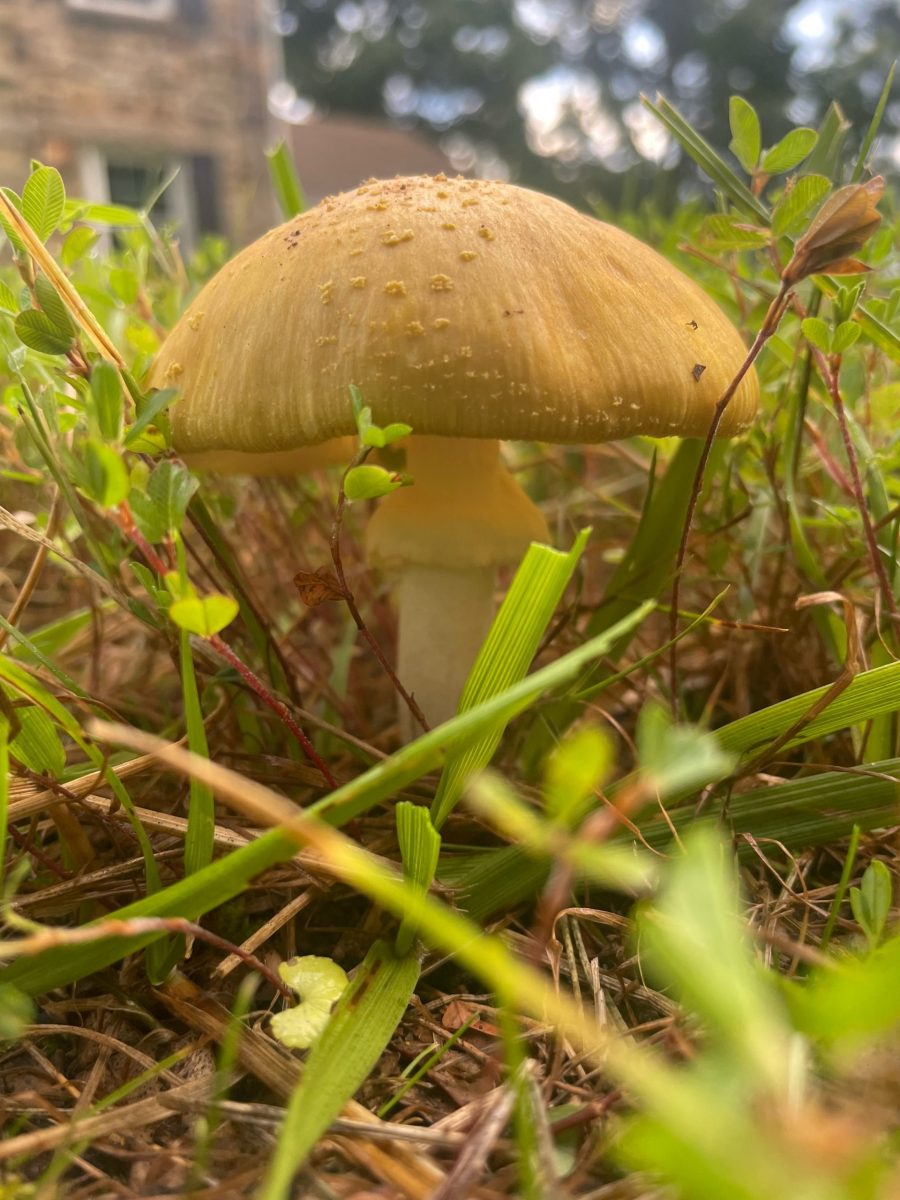Nature is an important part of my spirituality. And it is reflected most in my passion for finding and photographing mushrooms. One of the blessings of this call is that on our campus there are a number of small ecosystems and therefore a variety of mushrooms.
I would like to begin my writings about the mushrooms of St. Mary’s with a reflection on the mushroom as a symbol of resurrection. There is a system or network throughout our soil. It is called mycelium. When you dig a hole in the ground you may encounter a white stringy substance, you might have not noticed it or thought it was a white web like mold. But it is mycelium. It connects vegetation throughout the top layers of the Earth’s crust, through the soil. It also transmits nutrients and disperses the nutrients throughout a forest. The mushroom is the “blooming” fruit of the mycelium.
We have observed forest ecosystems from a human perspective. Naturalists have written about how competition allowed for forests to develop the strongest plants and tread through competition of resources. But recent studies into the role of mycelium in a forest ecosystem show that forests are cooperative environments not competitive ones. Mycelium are the path way in which a forest ecosystem to care for sick or diseased plants. The mycelium will pass along nutrients from “mother” trees to sick and struggling saplings.
Another quality of mycelium is that they decompose everything. Literally everything, but in decomposition the mycelium make the nutrients available to be reused. They take trapped energy, trapped within a dead plant or animal, and makes those nutrients and that energy available to the system again. Mycelium do the work of making resurrection possible by releasing back into the system that which was trapped by death. Allowing new life to spring forth from the depths of decomposition.
It is for these unique gifts of the mycelium that I give God thanks and praise! I hope you enjoy my many photographs of the mushrooms of St. Mary’s.

